The LaLaurie Mansion: New Orleans’ House of Horrors
Press enter or click to view image in full size
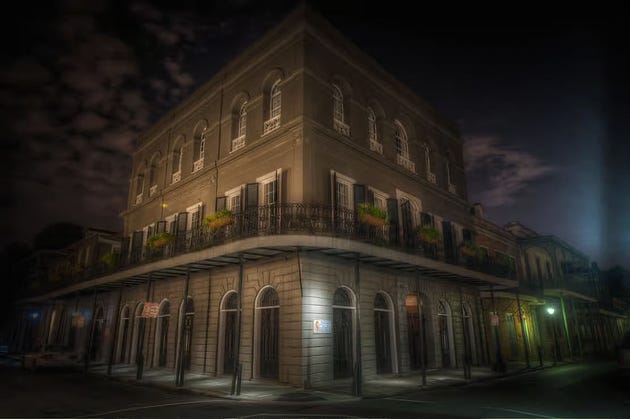
In the heart of New Orleans’ French Quarter, where music spills out of every doorway and the air itself feels heavy with history, stands a mansion with one of America’s darkest legacies. Its sweeping balconies and grand architecture disguise the fact that within its walls once lived a woman whose cruelty shocked even a society built on slavery. Behind that polished façade was a place of whispers, screams, and unimaginable suffering. This is the story of the LaLaurie Mansion, a house where wealth and horror walked hand in hand.
Marie Delphine Macarty, later infamous as Madame LaLaurie, was born in 1787 into one of the most powerful Creole families in New Orleans. She was surrounded by luxury and privilege from childhood, raised to believe she was exceptional and destined for power. Her family’s ties to politics and landownership reinforced her sense of superiority, and she carried that entitlement into adulthood. Delphine married young, first to a Spanish official who died tragically at sea, and then to Jean Blanque, a politician, merchant, and slave trader with a shadowy reputation. Blanque’s death left her with debts, but also with an estate that she carefully guarded. It was only with her third marriage, to a French physician named Louis LaLaurie, that her name would forever be tied to a house and a legacy of cruelty.
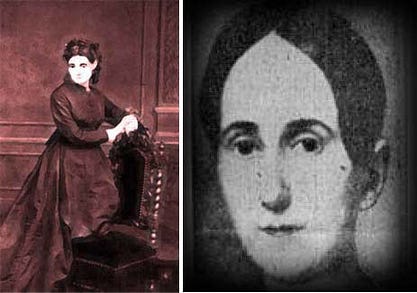
In 1831, Delphine purchased a grand home at 1140 Royal Street, placing the deed solely in her name. The mansion was stunning, with iron-laced balconies, marble floors, and enough space to host the lavish gatherings she adored. To society, she was an elegant hostess, a charitable woman who attended church and appeared to show compassion during yellow fever outbreaks. Yet rumors began to circulate. Enslaved people in her household bore marks of mistreatment, and neighbors whispered about strange disappearances. Even in Louisiana, where the brutality of slavery was normalized and ignored, Delphine’s behavior was considered extreme. There was something about her cruelty that seemed to stretch beyond the accepted boundaries, something darker than even her peers could stomach.
One story would hint at the horrors to come. A young, enslaved girl, no older than twelve, tugged too hard while brushing Madame LaLaurie’s hair one day. In a rage, Delphine chased her through the house with a whip in hand. The girl ran to the balcony, and whether by accident or desperate choice, she fell to her death. Her body was quietly hidden, and no serious charges were ever filed. When authorities finally intervened, Madame LaLaurie was brought to court, where she was fined for her actions and ordered to relinquish her remaining enslaved people. But even this fleeting brush with justice could not hold her back. Through her wealth, social connections, and careful manipulation of legal loopholes, she orchestrated a way to regain custody of the very individuals she had been forced to surrender. Neighbors may have glimpsed her fury and whispered warnings, but behind the balconies and polished floors, Delphine’s control remained unbroken. The cracks in her façade of refinement were visible, yet the full extent of her cruelty was still hidden, waiting for the moment it would finally be exposed.
That moment arrived on April 10, 1834. A fire broke out in the mansion’s kitchen, and smoke poured into the morning sky. Firefighters arrived quickly, but Madame LaLaurie tried to block their entry. When the rescuers forced their way inside, they discovered the cook, a seventy-year-old woman, chained to the stove. She admitted she had set the fire herself, not as an escape but as an attempt to end her suffering. She explained that she would rather die than endure another day in the house. Delphine’s cruelty was laid bare when the men reached the attic door.
Press enter or click to view image in full size
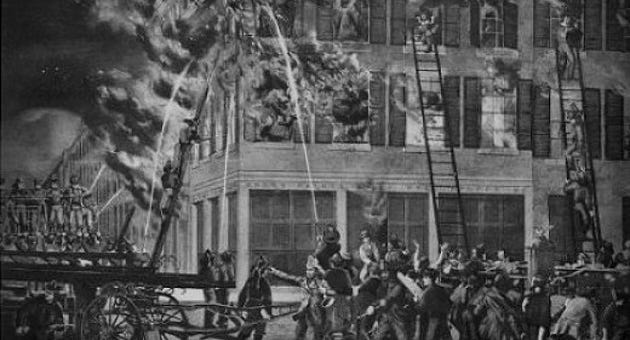
Within the attic, the full scope of Madame Delphine’s cruelty was revealed, far beyond anything New Orleans had imagined. Seven enslaved men and women were found chained to the walls, starved, mutilated, and disfigured in ways so horrifying that even a society accustomed to slavery recoiled. One woman reportedly had her stomach slit open, her entrails wrapped around her waist, while others had eyes gouged out or limbs twisted and reset to resemble a grotesque human crab. Another victim is said to have had a hole drilled into his skull with a wooden spoon left inside. It appeared to be an attempt to stir his brains, and just as disturbing, a woman had her mouth sewn shut and filled with animal excrement.
Accounts vary in their grisly specifics, but all agree on the undeniable truth: the attic held a chamber of pure evil, a cruelty that far exceeded the barbarism tolerated even among other slaveholders. The French consul, Armand Saillard, later reported to the Minister of Foreign Affairs that he had witnessed the suffering firsthand, describing “dislocated heads, legs torn by the chains, and bodies streaked with blood from head to foot from whiplashes and sharp instruments.” The mansion’s opulence now stood in stark contrast to the unimaginable torment hidden behind its elegant walls.
Press enter or click to view image in full size
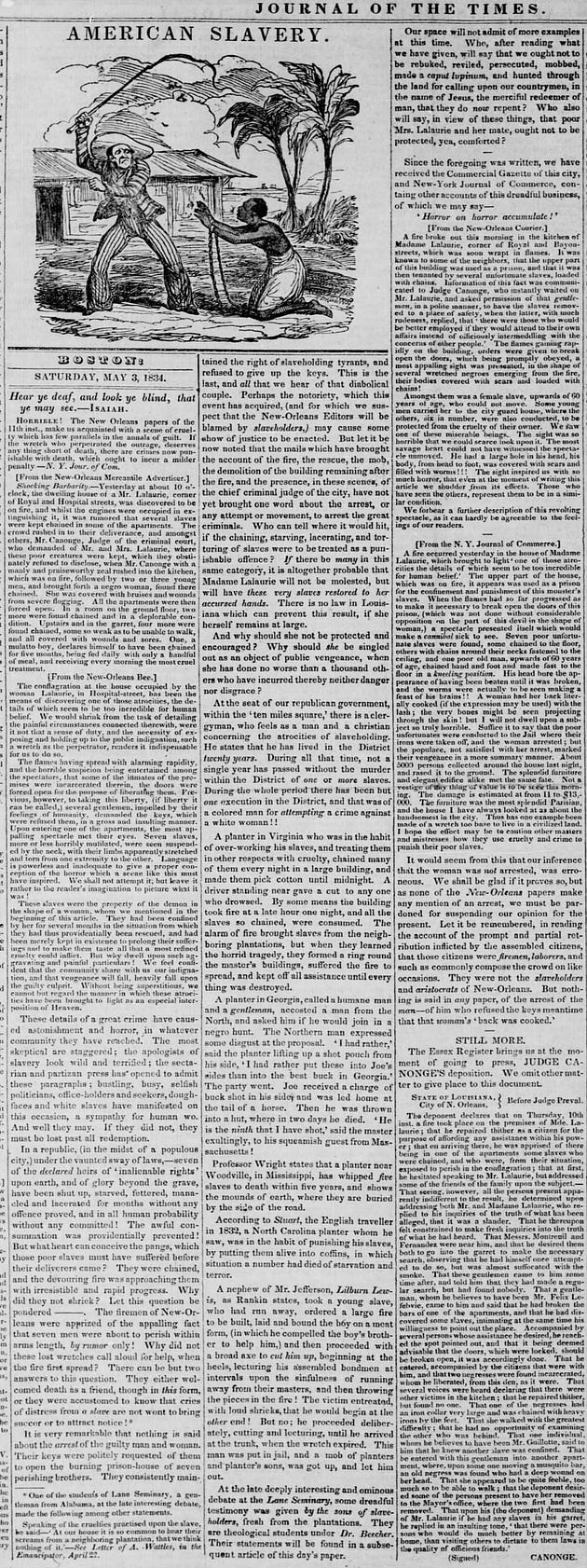
Delphine fled New Orleans that night, ironically enough, with one of her remaining “loyal” slaves. Her carriage broke through the gates and sped toward Lake Pontchartrain, where she boarded a ship bound for France. She would never face trial, despite the dozens of unaccounted enslaved who had gone “missing”, and although rumors circulated about her death (including a tale that she was gored by a wild boar), records confirm that she died in Paris in 1849. Her body was later returned quietly to New Orleans and reburied in St. Louis Cemetery №1, hidden among the city she had once ruled with terror. She died wealthy, unpunished, and unrepentant.
The house, however, did not rest. Almost immediately after the fire, stories of hauntings began to circulate. Neighbors claimed to hear screams at night, and some swore that shadowy figures appeared in the windows. As decades passed, the mansion changed hands many times, becoming apartments, a girls’ school, a bar, and eventually a site of fascination for tourists. Each new chapter added to its ghostly reputation. Children spoke of being scratched by an unseen woman, dock workers saw chained spirits dissolve into mist, and tenants complained of terrible smells and disembodied voices. Even in the twentieth century, business owners abandoned the property after witnessing objects move independently. And… when actor Nicolas Cage purchased the mansion in 2009, his career faced hardships soon after, and locals joked that he was cursed. He eventually lost the mansion to bankruptcy.
Press enter or click to view image in full size
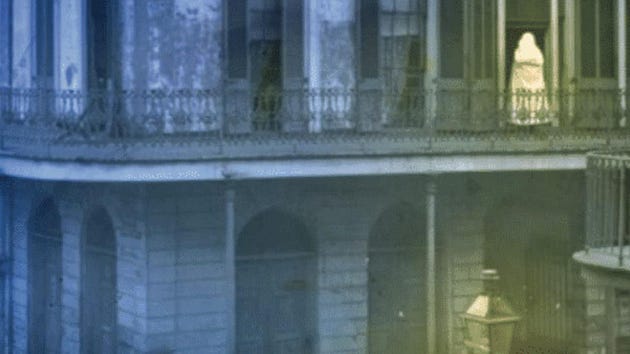
Separating fact from folklore has always been a challenge with the LaLaurie Mansion. Over the years, myths have woven themselves into the truth. Some insist that hundreds of bodies were discovered in the attic, though contemporary reports confirm seven tortured captives. Others claim that Delphine bathed in blood to preserve her youth, a story with no historical evidence that was made even more famous by American Horror Story: Coven (the best season IMO), and one likely borrowed from the legend of Elizabeth Báthory. Yet beneath the exaggerations lies a core truth that cannot be denied: Madame LaLaurie inflicted unimaginable suffering, and her mansion remains a place where history and horror are permanently entwined.
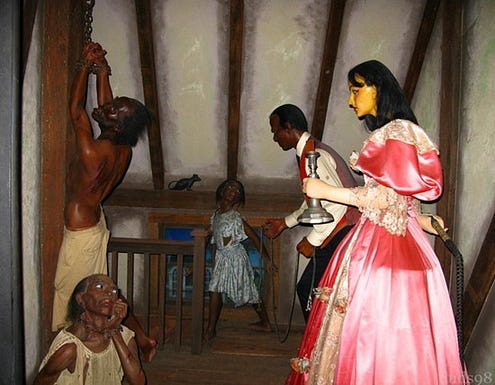
Today, the LaLaurie Mansion is privately owned, and its doors are closed. Still, it remains one of the most visited stops on New Orleans ghost tours. Guides lower their voices when they approach, and guests linger on the street, staring up at the balconies where so much pain once lived. Some swear they feel the air grow colder, others claim to hear faint cries from the attic. Whether haunted by restless spirits or the weight of history, the mansion refuses to be forgotten. And perhaps that is the most fitting punishment: that Delphine LaLaurie’s name and her home are now remembered not for elegance and wealth, but for cruelty, horror, and the shadows they left behind.
To listen to an audible version, check out The Ominous Archives podcast.
References
Guet-McCreight, D. (n.d.). On Delphine LaLaurie: The mythologizing of a murderer (Doctoral dissertation). ProQuest.
History.com Editors. (n.d.). Arson uncovers torture chamber in mansion of New Orleans enslaver. This Day in History. https://www.history.com/this-day-in-history/april-10/a-torture-chamber-is-uncovered-by-arson
Long, C. M. (n.d.). Delphine LaLaurie. 64 Parishes. https://64parishes.org/entry/delphine-lalaurie
New Orleans Ghost Tour. (n.d.). The LaLaurie Mansion: The haunted house of New Orleans. https://neworleansghosttour.com/lalaurie-mansion/
ThoughtCo Editors. (n.d.). Delphine LaLaurie: Biography and history of the LaLaurie Mansion. https://www.thoughtco.com/delphine-lalaurie-4684656
Zacek, N. (2021). Holding the whip-hand: The female slaveholder in myth and reality. Journal of Global Slavery, 6(1), 55–80.
Ghost City Tours. (n.d.). Coven: The (un)true horror of American Horror Story. https://ghostcitytours.com/new-orleans/ghost-stories/coven-untrue-american-horror-story/

Dive into the chilling world of horror literature and explore spine-tingling tales crafted by Samantha Almeida. Follow me on social media for the latest updates, exclusive content, and a community of fellow horror enthusiasts. Remember, the shadows are always watching—stay connected and keep the scares alive!
Home | About | Services | Privacy Policy
